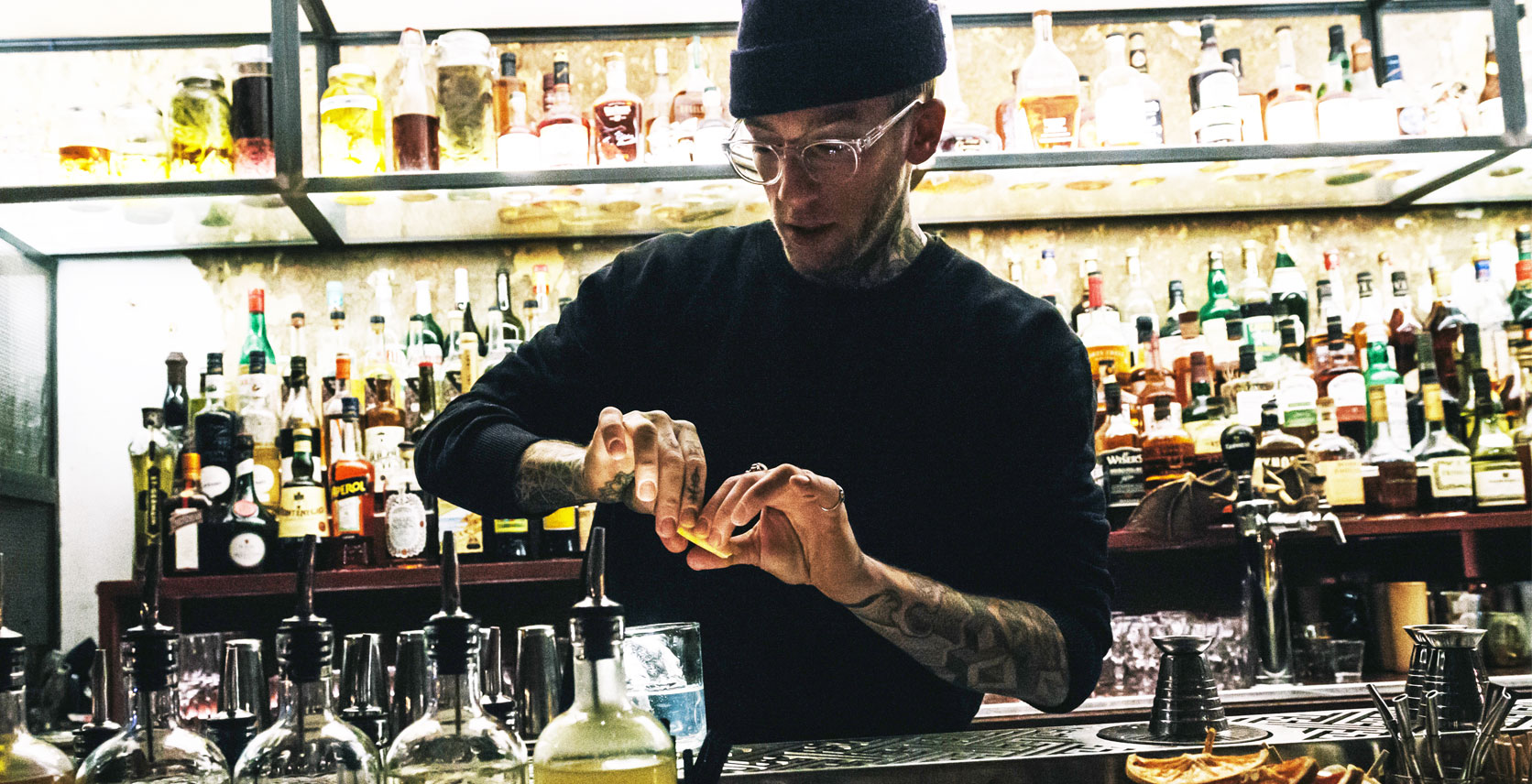Mezcal: Here’s How to Fully Appreciate Mexico’s Most Mystical Liquor
Served neat in a wine glass, mezcal is a go-to spirit for the old school purist; a clean, mystical elixir with a smoky flavour that will take you up a notch after a hell of a day at work. But if your knowledge of Mexican spirits begins and ends at tequila shots, you’re going to want to learn a few things before you pick up a glass – lest you piss off the mezcal gods.
We caught up with Robin Goodfellow, the resident drink maestro at Parkdale’s speakeasy-style mezcaleria PrettyUgly, to talk about tequila’s smokier, more sophisticated cousin: what to order, how to drink it, and where to get your hands on it. Because if you want to learn to drink mezcal like a true maestro, you better drink it like the locals do: with a slice of orange and a pinch of salt.
THE FIRST TIME
Just like you have to learn to walk before you can run, consider trying mezcal in a cocktail before jumping straight to sipping. “Its earthiness, smokiness lends itself well to all types of cocktails,” explains Goodfellow. Pro tip: skip the more obvious tequila drinks and try substituting mezcal for gin instead. “If you take any gin classics – like a Last Word or a Negroni, or even a Martini or Vesper – and you sub mezcal for the gin, you’re in for a treat,” he promises.
WHAT IT TASTES LIKE
Mezcal’s flavour profile can be tricky to describe; its unique taste a byproduct of a unique growing process. “Instead of getting aged in a man-made barrel, it gets aged by the earth,” explains Goodfellow. “Mezcal, depending on the agave, can be in the ground growing anywhere from 8 to 30 years.”
“When you cook it, ferment it and then distill it, you’re magnifying all that flavour,” he says. But don’t expect to pick up on all of it right off the bat. For the uninitiated, mezcal’s most prominent note is its smokiness. Much like the spirit itself, it takes time to tease out the subtleties. “The more mezcal you drink, the less you notice the smokiness, and you’re left with all the other unique flavours,” says Goodfellow. “It’s a very mystical spirit.”
WHAT TO LOOK FOR
When it comes to choosing a mezcal, you want to focus on three important factors: who’s making it (some “maestro mezcaleros” are fourth- or fifth-generation, serving up family recipes perfected over time), where it’s being made, and the type of agave used. Goodfellow compares it to wine: a Cabernet from Bordeaux isn’t the same as one from Napa. The same goes for mezcal, he says. “If you’ve got an Espadín from Mitla versus Miahuatlán, you’re going to taste a huge difference.”
PROOF POINT
Another key to separating good mezcal from bad? The proof is in – or on – the bottle. “Bad mezcal comes from cutting corners, watering down the bottle,” says Goodfellow. “45-55% is the sweet spot.” Anything lower than that simply won’t taste as good. “When you get to mezcals that are 38% and 40%, all you taste is the booze because they’ve been watered down, the flavour gets masked, and you’re stuck with just smoky alcohol,” he explains.
PRICE POINT
Quality mezcal, like most high-end spirits, doesn’t come cheap. It’s that age-old issue of supply versus demand: “Demand is increased and supply is staying the same,” says Goodfellow. It’s simply not possible to rush order a product that can take up to three decades to produce. And don’t forget import costs. “A bottle of mezcal that costs $30 in Oaxaca can cost about $300 in Toronto,” he says.
On average, expect to pay $40-50 a bottle, and a few hundred for the really good stuff. It’s worth the investment, says Goodfellow. “You can get a Tepeztate, which is like the grandfather, a 30-year-old agave, from around $200-$300 right now. I predict in about five years, it’ll be $2,000 a bottle.”
THREE RULES TO DRINK BY
1. “Never shoot it. Never.”
Mezcal takes anywhere from 8 to 30 years to make, so it should take more than three seconds to drink. “Please,” says Goodfellow. “It’s for sipping.”
2. Keep it at room temperature.
“Think about the weather in Oaxaca, it’s quite warm,” he says. Which makes mezcal the perfect summer spirit. “When it’s hot, it emulates what it’s like in Oaxaca.”
3. Let it breath.
“It’s typical to taste other spirits in a closed-nose vessel to get all the aromatics up your nose. Mezcal is a bit different because you don’t want to focus on the smokiness,” explains Goodfellow. “The ideal vessel is called a ‘copita,’ a little clay dish.” A wider glass makes it easier to pick out the spirit’s more subtle notes. Even if – especially if – it’s your first time.










